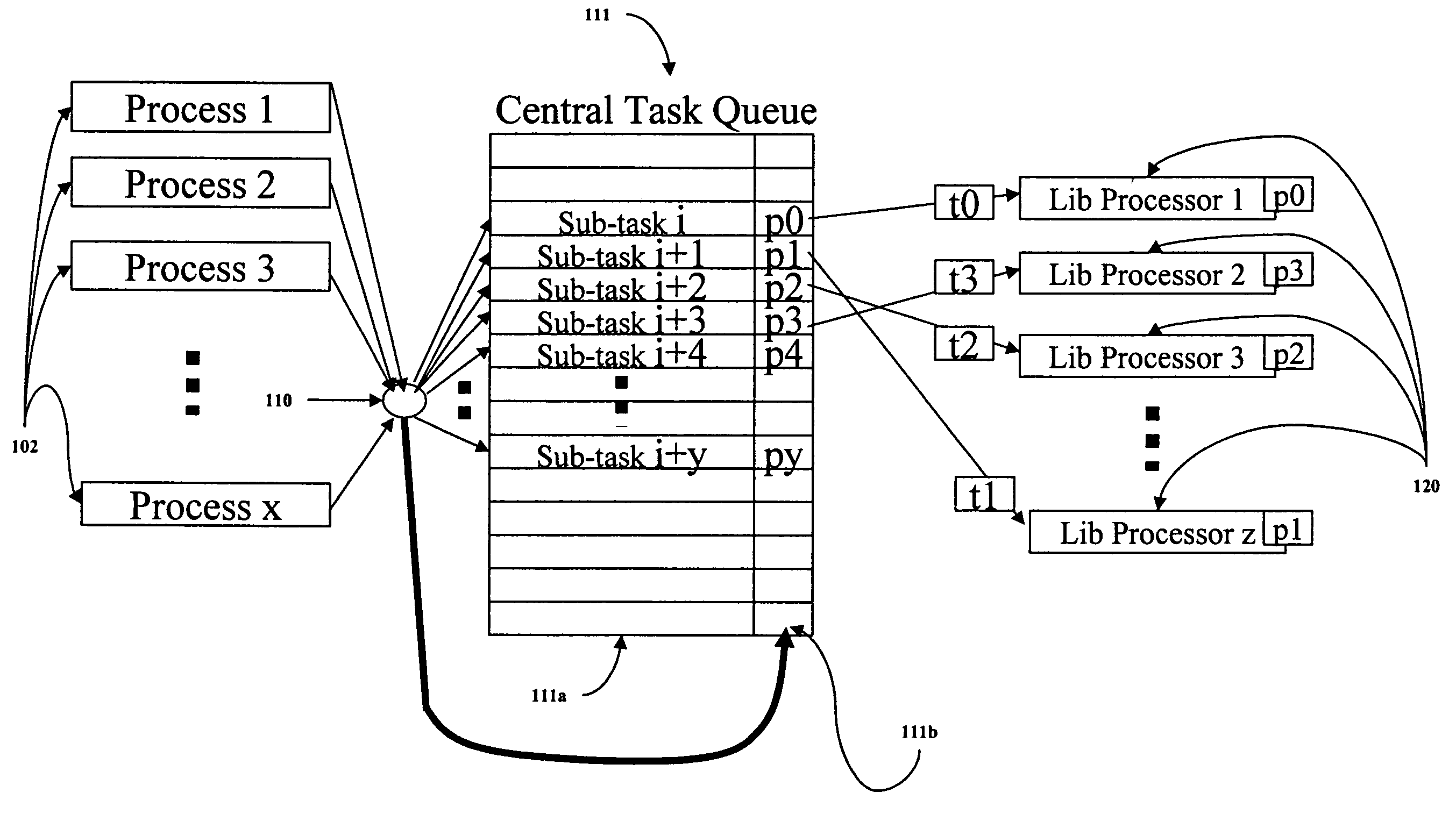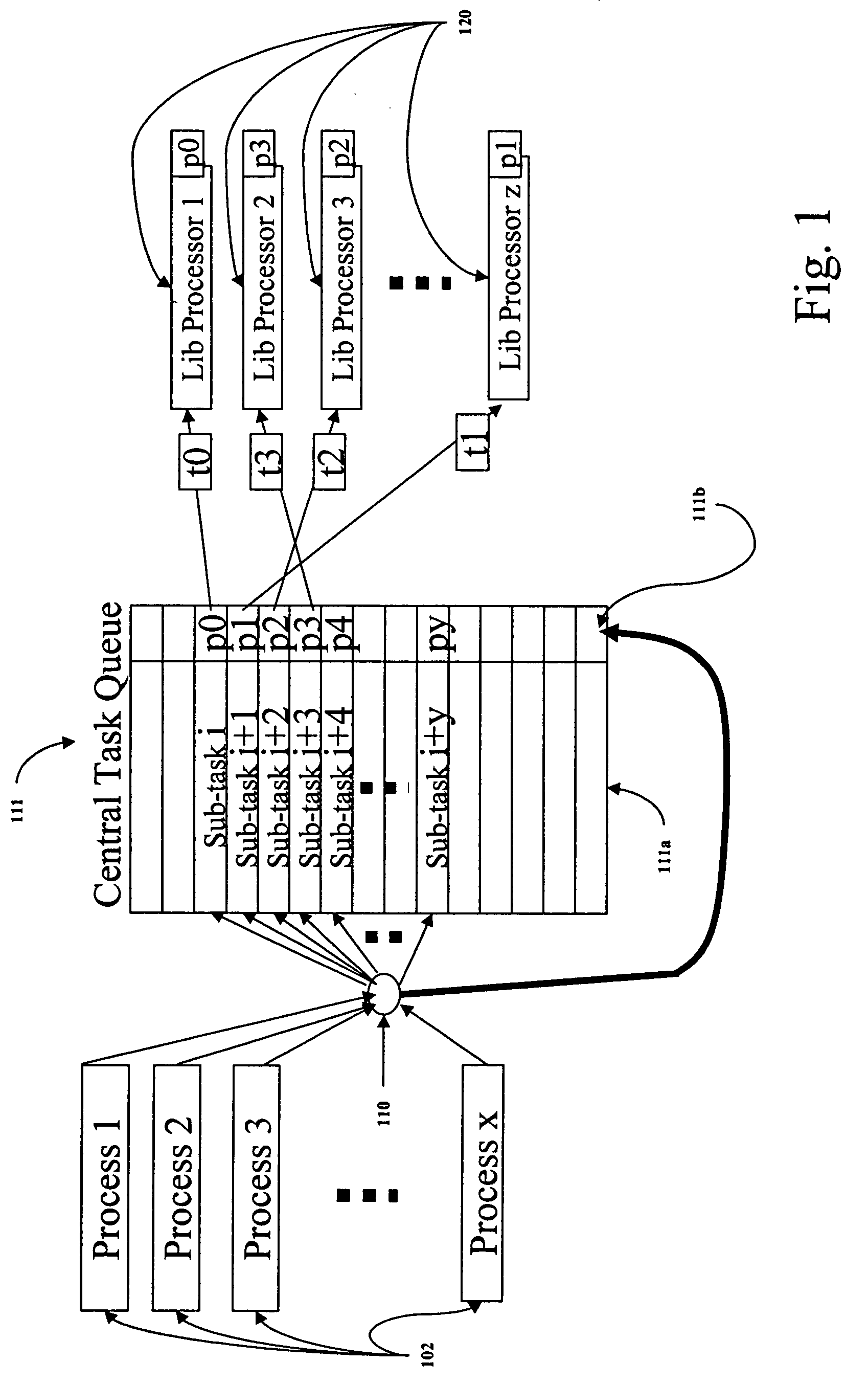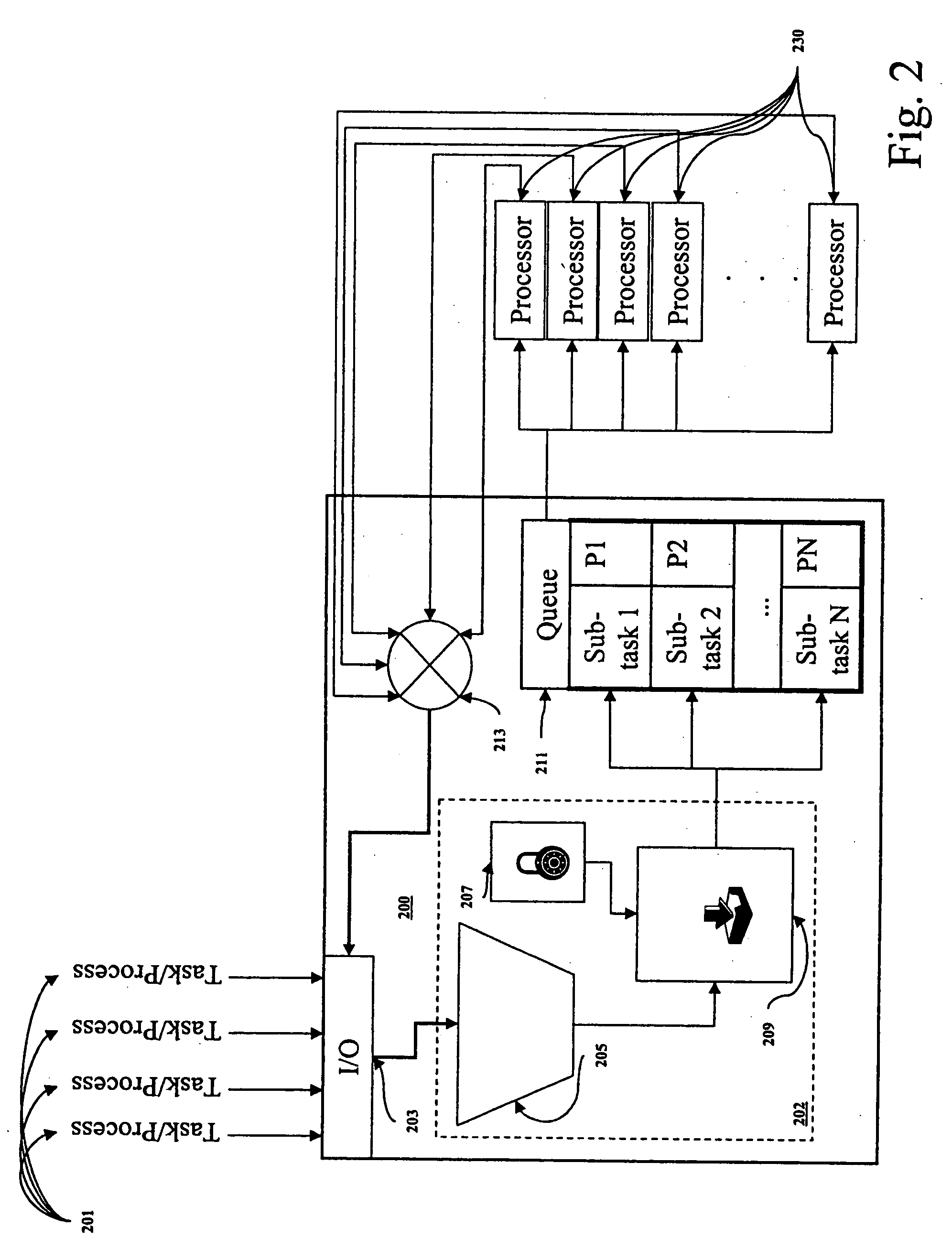Operating system kernel-assisted, self-balanced, access-protected library framework in a run-to-completion multi-processor environment
a library framework and operating system technology, applied in the field of multi-processor computational resource management, can solve the problems of presenting many drawbacks of the above-mentioned interrupt-based resource management system, affecting the performance reducing the efficiency of the operating system,
- Summary
- Abstract
- Description
- Claims
- Application Information
AI Technical Summary
Benefits of technology
Problems solved by technology
Method used
Image
Examples
Embodiment Construction
[0025] Referring now to the drawing, in which like reference numbers refer to like elements throughout the various figures that comprise the drawing, FIG. 1 is flow diagram of an exemplary embodiment of the present invention. In the exemplary embodiment, processes 102 identified as Process 1, Process 2, Process 3 through Process x arrive as part of one or more commands that have been sent for execution. These processes 102 are then atomized by the kernel 110 into one or more atomic sub-tasks that are mapped out by the kernel 110 and placed into a central task queue 111 that includes each sub-task 111a as well as a protection attribute 111b. A series of library processors 120 obtain sub-tasks 11a and corresponding protection attributes 111b from the central task queue 111 upon becoming idle.
[0026] In an exemplary embodiment, the task-based library system receives a process 102 and kernel 110 maps out the process 102 into one or more sub-processes 111a that correspond to atomic sub-t...
PUM
 Login to View More
Login to View More Abstract
Description
Claims
Application Information
 Login to View More
Login to View More - R&D
- Intellectual Property
- Life Sciences
- Materials
- Tech Scout
- Unparalleled Data Quality
- Higher Quality Content
- 60% Fewer Hallucinations
Browse by: Latest US Patents, China's latest patents, Technical Efficacy Thesaurus, Application Domain, Technology Topic, Popular Technical Reports.
© 2025 PatSnap. All rights reserved.Legal|Privacy policy|Modern Slavery Act Transparency Statement|Sitemap|About US| Contact US: help@patsnap.com



